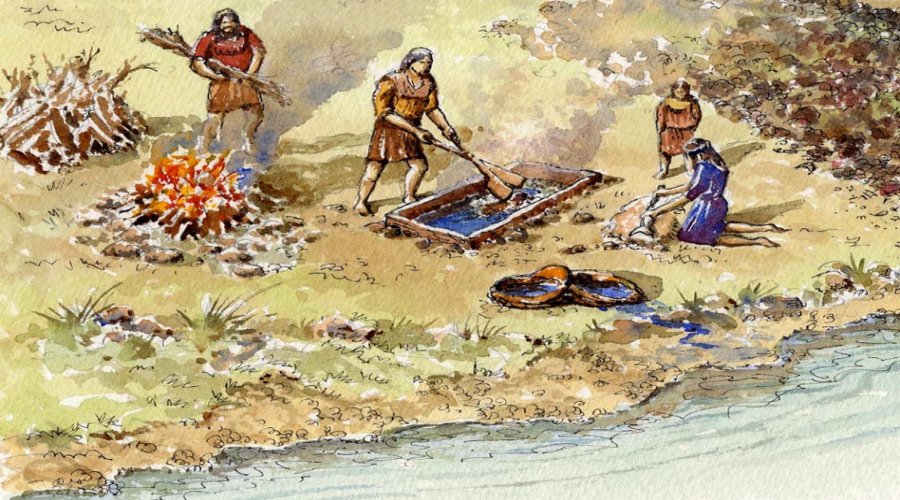Enigmatic Bronze Age Fulacht Fiadh: ‘Kitchens’ Of The Legendary Irish Warriors
A. Sutherland - AncientPages.com - 'Burnt mounds' also known as fulacht fiadh are thought to be cooking places of the legendary soldiers of the High Kings of Ireland. They were also used by ancient Celtic communities to celebrate two great Celtic fire festivals, Samhain ('Summer End') and Beltane (the beginning of summer).
This millennia-old tradition of cooking pits survived from the Bronze Age (1800 BC) until the Elizabethan Era, from 1558 to 1603.
Such ‘kitchens’ were usually circular, crescent-shaped, or described as a horseshoe or kidney-shaped mound of fire-cracked stones mixed with charcoal and ash and a depression to one side of the mound.
They are true ancient Irish cooking sites. The water from a nearby stream would have been used to fill the trough and stones heated on a nearby hearth until red-hot.
The stones would have been dropped into the water until it came to the boil, which would have taken about twenty minutes.
Meat, wrapped in a bundle of unthreshed oats, could be cooked at a rate of twenty minutes per pound weight, which means that a 4.5 kg joint would be ready for consumption in three hours and forty minutes. The mound of stones with its tell-tale shape is formed by the cracked stones which were cleaned out of the trough after cooking and cast on the three sides away from the source of water.

The structures are usually found alone but have also appeared in groups of two to six, spaced as close as 16 or so feet from one another, forming an archaeological complex. Credits: ancient ireland.org
Recent dating of 'fulacht fiadh' across Ireland indicates they are all Bronze Age in date and their sizes varied from a few meters in diameter to more than thirty meters.
The term ‘fulacht fiadh’ is found in the early Irish literature from at least the 9th century AD and refers to an open-air field kitchen in form of a water-filled pit used to cook meat. In Gaelic, “fulacht” means “cavity,” and it can also refer to an outdoor cooking pit where meat was roasted on a spit or over an open fire.
Researchers believe that "Fiadh or Fia" which means "of the deer" or "of the wild", may be derived from the early word "fian" - "of the Fianna (or Fionn Mac Cumhail).
Fionn MacCumhaill was a great mythical Irish warrior. His name has a number of different spellings and the name ‘Fionn’ (in Gaelic, 'fair') likely referring to light colored hair. Fionn was the son of Cumhaill, the leader of the legendary warriors of the High Kings of Ireland - Fianna, who lived apart from the rest of Gaelic society.
The location of 'burnt mounds' was usually close to a stream or lake, or any low-lying boggy ground. A rectangular pit, a meter wide by 2 meters long and maybe half a meter or more in-depth was dug where it would quickly fill with water. Then, it was clad on the four sides with wooden sections.
A fire was set near to the pit, upon which stones were heated and then dropped into the water. Subsequently, a joint of beef, pork, lamb, chicken, or other meat, was wrapped in straw (sugan - like the straw ropes) and put into the simmering water until cooked.
The boiling water obtained in this heating process was probably used for a variety of purposes.
Some recent tests have shown they could boil seventy gallons of water (265 liters) in about fifteen minutes! The 'burnt mounds' were also discovered in the neighboring United Kingdom, but most of them - approximately 6,000 recorded fulacht fiadh sites - are located in Ireland.

Overall the fulacht fiadh may have indeed been multifunctional, something like our modern kitchen sink - used for many different purposes. Source
Several other theories have been proposed to explain the nature of the Irish 'burnt mounds'. Covered by light structures, the sites could have been used as saunas or sweathouses, to brew beer or for textile production.
However, a lack of indispensable artifacts associated with any of the proposed activities at excavated fulacht fiadh sites continues to shroud the purpose of these prehistoric structures.
Only in some of these sites, there were unearthed certain artifacts such as a gold ring, a dress-fastener, some amber bead fragments, and tanged arrowheads. This could indicate that the 'fullacht fiadh' served not only domestic purposes but even ritual ones.
Written by – A. Sutherland - AncientPages.com Senior Staff Writer
Copyright © AncientPages.com All rights reserved. This material may not be published, broadcast, rewritten or redistributed in whole or part without the express written permission of AncientPages.com
Expand for referencesMore From Ancient Pages
-
 7,000-Year-Old Shark-Tooth Knives Discovered In Indonesia
Archaeology | Oct 27, 2023
7,000-Year-Old Shark-Tooth Knives Discovered In Indonesia
Archaeology | Oct 27, 2023 -
 Pyramid-Builders’ Cemetery With Coffins Discovered Near Giza, Egypt
Archaeology | May 6, 2019
Pyramid-Builders’ Cemetery With Coffins Discovered Near Giza, Egypt
Archaeology | May 6, 2019 -
 Roman Coin Hoards Found In The Conwy Valley Declared Treasure
Archaeology | Oct 20, 2023
Roman Coin Hoards Found In The Conwy Valley Declared Treasure
Archaeology | Oct 20, 2023 -
 Ancient Gaziantep Castle Destroyed In Turkey Earthquake
News | Feb 6, 2023
Ancient Gaziantep Castle Destroyed In Turkey Earthquake
News | Feb 6, 2023 -
 Gold Treasures From The Land Of Ancient Colchian Culture In Georgia
Featured Stories | Apr 9, 2025
Gold Treasures From The Land Of Ancient Colchian Culture In Georgia
Featured Stories | Apr 9, 2025 -
 Urban Resiliency Lie Within Ancient Cities – New Study Suggests
Archaeology | Jul 25, 2023
Urban Resiliency Lie Within Ancient Cities – New Study Suggests
Archaeology | Jul 25, 2023 -
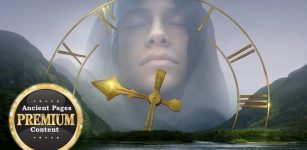 Ancient Secrets Of The Masters Of Mu – Keepers Of Sacred Knowledge – Part 2
Ancient Mysteries | Aug 25, 2018
Ancient Secrets Of The Masters Of Mu – Keepers Of Sacred Knowledge – Part 2
Ancient Mysteries | Aug 25, 2018 -
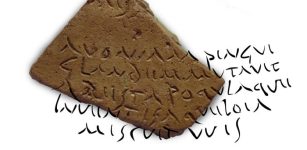 Incredible Discovery Of A Poem By Virgil On A Roman Oil Amphora
Archaeology | Jun 21, 2023
Incredible Discovery Of A Poem By Virgil On A Roman Oil Amphora
Archaeology | Jun 21, 2023 -
 Unusual Double Temple Of Kom Ombo Dedicated To Crocodile God Sobek And Falcon-Headed God Horus
Featured Stories | Mar 14, 2016
Unusual Double Temple Of Kom Ombo Dedicated To Crocodile God Sobek And Falcon-Headed God Horus
Featured Stories | Mar 14, 2016 -
 During Tough Times Ancient ‘Tourists’ Sought Solace In Florida Oyster Feasts
Archaeology | May 4, 2020
During Tough Times Ancient ‘Tourists’ Sought Solace In Florida Oyster Feasts
Archaeology | May 4, 2020 -
 3,500-Year-Old Skull And Thighbone Discovered In Sapinuwa Antique City Of Central Anatolia
Archaeology | Dec 3, 2019
3,500-Year-Old Skull And Thighbone Discovered In Sapinuwa Antique City Of Central Anatolia
Archaeology | Dec 3, 2019 -
 Yum Kaax, Mayan God Of Agriculture, Lord Of Woods And Caretaker Of Animals
Featured Stories | Jul 15, 2020
Yum Kaax, Mayan God Of Agriculture, Lord Of Woods And Caretaker Of Animals
Featured Stories | Jul 15, 2020 -
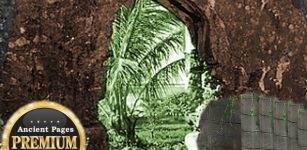 Anomalous Ancient Structures In The South West Pacific Remain Unexplained
Ancient Mysteries | May 19, 2018
Anomalous Ancient Structures In The South West Pacific Remain Unexplained
Ancient Mysteries | May 19, 2018 -
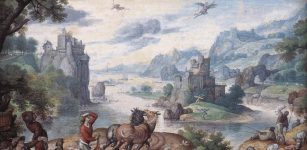 The Ancient ‘Flying Machines’ Of Icarus and Daedalus
Featured Stories | Aug 16, 2014
The Ancient ‘Flying Machines’ Of Icarus and Daedalus
Featured Stories | Aug 16, 2014 -
 Secret Story Of The Ancient Bak’Ti Gods And Their Battle To Gain Control Over Humanity And Planet Earth – Told By Shamans
Ancient Mysteries | Jun 23, 2018
Secret Story Of The Ancient Bak’Ti Gods And Their Battle To Gain Control Over Humanity And Planet Earth – Told By Shamans
Ancient Mysteries | Jun 23, 2018 -
 Huge Folklore Map With Supernatural Beings And Mythical Monsters Created – Available For Free Online
Folklore | Jan 7, 2025
Huge Folklore Map With Supernatural Beings And Mythical Monsters Created – Available For Free Online
Folklore | Jan 7, 2025 -
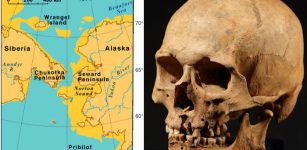 Ancient DNA Reveals Migration From North America Across The Bering Sea And Unknown Prehistoric People In Siberia
Archaeology | Jan 12, 2023
Ancient DNA Reveals Migration From North America Across The Bering Sea And Unknown Prehistoric People In Siberia
Archaeology | Jan 12, 2023 -
 Next Discovery In Tepe Ashraf, Isfahan – Archaeologists May Have Stumbled Upon Ancient Necropolis
Archaeology | Aug 16, 2020
Next Discovery In Tepe Ashraf, Isfahan – Archaeologists May Have Stumbled Upon Ancient Necropolis
Archaeology | Aug 16, 2020 -
 Evidence Of Neolithic Bird Hunting In Upper Mesopotamia
Archaeology | Sep 27, 2023
Evidence Of Neolithic Bird Hunting In Upper Mesopotamia
Archaeology | Sep 27, 2023 -
 Neanderthals Buried Their Dead And Developed Spirituals Beliefs – Did Neanderthals Practice Religion?
Featured Stories | Dec 28, 2016
Neanderthals Buried Their Dead And Developed Spirituals Beliefs – Did Neanderthals Practice Religion?
Featured Stories | Dec 28, 2016

